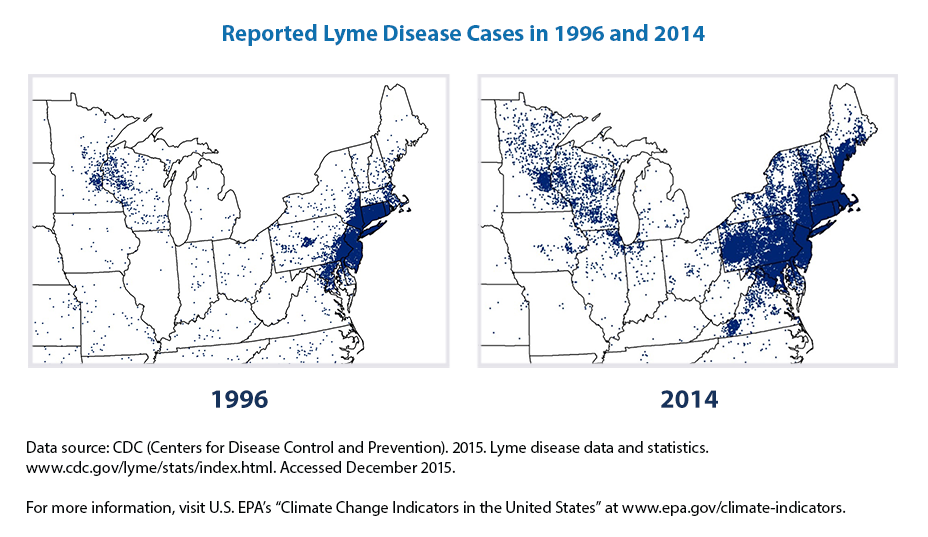Disease vectors, such as mosquitos and ticks, are moving into new areas as warmer, wetter climates push poleward and upslope. The spread of malaria and dengue fever, for instance, is believed to be at least partly due to mosquitos expanding their range with the changing climate.
Click through this series of maps illustrating the projected expansion of mosquitos carrying Aedes-borne viruses (dengue fever* and Zika among them). These projections are based on an RCP (representative concentration pathway) of 8.5 which is really a worst-case scenario in which we continue on with our business as usual practices and fail to mitigate climate change. So, with any luck, this won't happen! But, you can also see a set of projections based on a more plausible RCP with the original paper (Ryan et al., 2019). These projections demonstrate the rapid increase in exposure for highly populated areas, some expansion into new areas - meaning newly vulnerable populations.
- Ok, but if it's getting so much warmer, then maybe it'll be TOO warm for these mosquitos in places they currently haunt, right? Well, this is true to a very small degree. But remember, the higher latitudes are warming more dramatically than the tropics, so it's not uniform warming across the globe.
*In 2019, countries across tropical Asia saw higher than usual instances of dengue fever.
- Bangladesh Reports More than 13,000 Dengue Cases in July (Khan and Chappell, 2019)
- Philippines Declares National Alert After 465 Dengue Deaths (The Straits Times, 2019)
- Peak Dengue Season in Singapore: 8000 Cases, 5x Last Year's Number (Outbreak News Today, 2019)
Let's take a look at another vector, ticks. Look at the massive growth in reported cases of Lyme Disease between 1996 and 2014. Many of you live in Pennsylvania or surrounding states, so you're likely all too familiar with ticks and Lyme Disease. Most of us have a story or two of pulling a deer tick off ourselves, our children, or our pet. I've spared you a close-up image of a deer tick on this page, you're welcome.
- But isn't it possible that people are just doing a better job of reporting Lyme Disease now than they did in 1996? That's certainly part of what you see here, but it isn't the whole story. These northern latitude states are warming faster than the rest of the country, and as such as are becoming more hospitable habitat into which deer ticks are expanding. Additionally, if places are not getting as cold over the winter as they used to, then the deer ticks might be active for a longer period of time each year. All of this increases our exposure to this potential impact on human health.

Rodents and their fleas are also a concerning disease vector with changing distributions in a changing climate. For example, Hantavirus borne by fleas on deer mice is closely linked to the ENSO cycle in the US Southwest (Hjelle and Glass, 2000), and evidence points to climate-related distribution changes in Europe of Hantavirus borne by other rodents (European Center for Disease Prevention and Control, n.d.). In Brazil, warmer temperatures mean an increased expansion of sugarcane production. Rodents (particularly deer mice) find sugarcane quite tasty and estimates suggest that this combination of increased sugarcane production and warming temperatures could expose an additional 20% of Brazilians to this potentially fatal virus.
